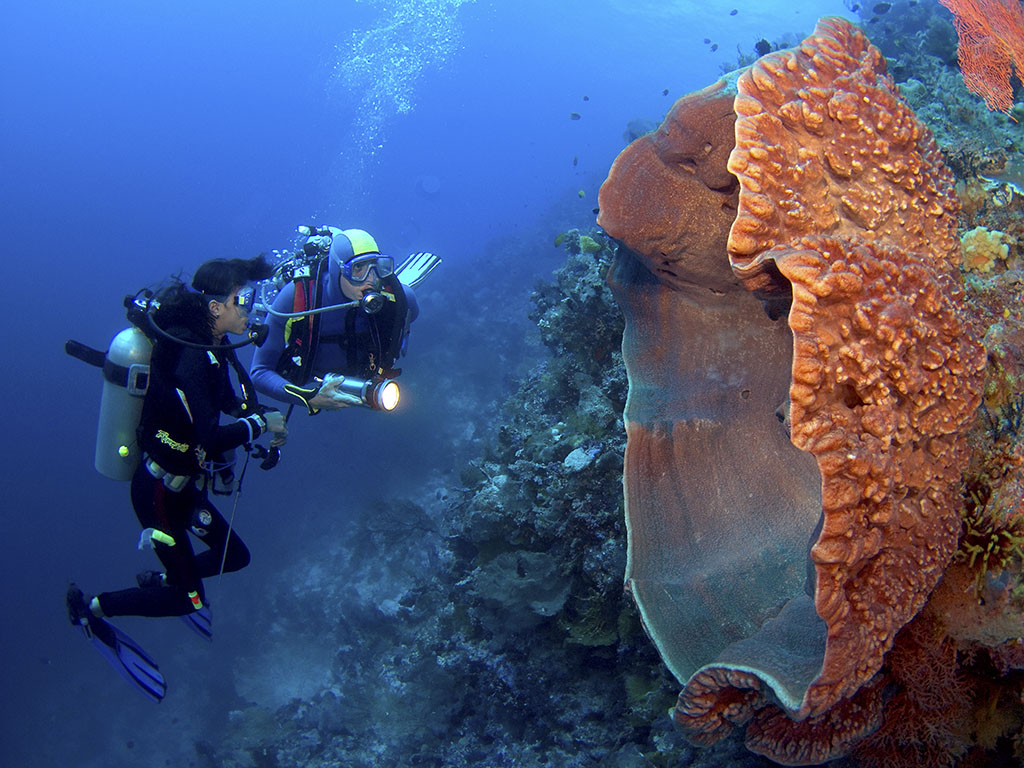In the vast, mysterious expanses of our oceans, where countless creatures swim and drift, sea sponges stand as some of the most ancient and intriguing residents. Often overlooked in favor of more charismatic marine life, these seemingly simple organisms hold a wealth of secrets and fascinating characteristics that contribute significantly to the health and balance of marine ecosystems.
Ancient Origins and Evolutionary Marvels
Sea sponges in the ocean belong to the phylum Porifera, which means “pore bearer.” This scientific name for sea sponge name aptly describes their porous bodies that facilitate the constant flow of water, essential for their survival. Remarkably, sea sponges are among the oldest living organisms on Earth, with fossil records dating back over 600 million years. Their resilience and adaptability have allowed them to thrive through multiple mass extinction events, showcasing their evolutionary prowess.
Unlike most animals, sea sponges lack true tissues and organs. Their bodies are composed of specialized cells that perform various functions, such as filtering water, capturing food particles, and supporting their skeletal structure. This unique cellular organization has intrigued scientists for centuries, offering insights into the early stages of animal evolution.
Nature’s Master Filter-Feeders
One of the most impressive abilities of sea sponges is their filtration prowess. These marine organisms can filter thousands of liters of seawater daily, capturing tiny plankton, bacteria, and organic particles suspended in the water. By doing so, they play a crucial role in maintaining water quality and clarity, benefiting the entire marine ecosystem.
The intricate canal systems within their bodies allow sponges to pump water efficiently. As water passes through their pores, specialized cells called choanocytes trap food particles, while other cells called archaeocytes digest and distribute the nutrients. This filtration system is so efficient that sponges can remove up to 90% of bacteria from the water passing through them.
Chemical Factories of the Sea
Beyond their ecological role, sea sponges are renowned for their chemical diversity. They produce a wide array of bioactive compounds, many of which have potent antimicrobial, antiviral, and anticancer properties. These compounds serve as chemical defenses against predators and pathogens, ensuring the sponge’s survival in the competitive marine environment.
The pharmaceutical industry has taken a keen interest in these natural compounds. For instance, the anti-cancer drug Cytarabine, used to treat leukemia and lymphoma, was derived from a Caribbean sea sponge. Researchers continue to explore the chemical arsenal of sponges, hoping to discover new drugs and treatments for various human diseases.
Symbiotic Relationships and Camouflage Experts
Sea sponges often form symbiotic relationships with other marine organisms. Tiny shrimp, crabs, and fish find refuge within the sponge’s labyrinthine structure, gaining protection from predators. In return, these guests help clean the sponge by removing debris and deterring parasites, creating a mutually beneficial arrangement.
Some sponges take camouflage to an art form, blending seamlessly with their surroundings to avoid detection by predators. They can harbor symbiotic algae and bacteria that provide additional nutrients through photosynthesis, further enhancing their survival strategies.
Biotechnological and Environmental Applications
The unique properties of sea sponges have inspired various biotechnological applications. Their skeletal structures, composed of silica or calcium carbonate, exhibit remarkable strength and flexibility. Scientists are studying these structures to develop new materials for medical implants, construction, and even optical devices.
Moreover, the filtration capabilities of sponges have potential applications in environmental conservation. Artificial sponge structures could be deployed to clean polluted waters, mimicking their natural role in maintaining marine ecosystem health.
Conservation Concerns and Future Prospects
Despite their importance, sea sponges face threats from human activities such as pollution, overfishing, and climate change. Rising ocean temperatures and acidification can disrupt their delicate balance, leading to declines in sponge populations. Protecting these ancient organisms is crucial for preserving marine biodiversity and ecosystem stability.
Efforts to conserve sea sponges include marine protected areas, sustainable harvesting practices, and further research into their biology and ecology. By understanding and appreciating these silent sentinels of the sea, we can ensure their continued presence and the myriad benefits they provide to our planet.
Conclusion
In conclusion, sea sponges in the sea are far more than simple, stationary creatures. They are ancient survivors, master filter-feeders, chemical factories, and ecosystem engineers. Their hidden secrets and fascinating facts continue to captivate scientists and nature enthusiasts alike, highlighting the incredible complexity and interconnectedness of life beneath the waves.

